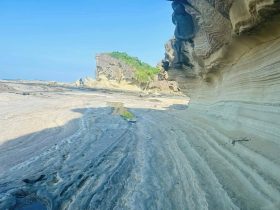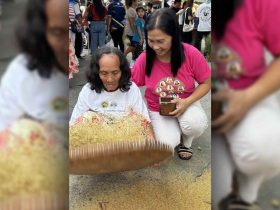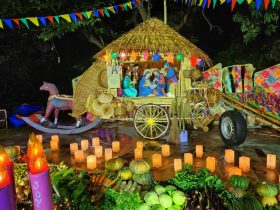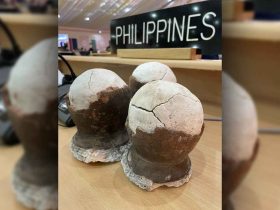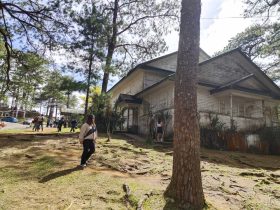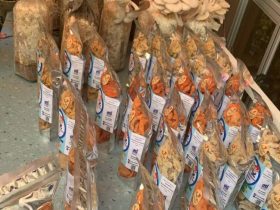
The kesong puti is an unaged cheese made from goat or carabao milk, traditionally wrapped in banana leaves. With a soft and delicate texture and a mellow salty and tangy flavor, it is a popular companion to a pandesal and a hot cup of coffee, which makes for one awesome Filipino breakfast.
With little to no odor, kesong puti is also a popular ingredient in various dishes in Filipino cuisine, including kakanin, fern salad or dishes like paella negra and ginataang pakô.
Many parts of the country (Laguna, Cebu, Cavite, and Bulacan) have independently developed their own style and technique of making kesong puti (“white cheese” when translated to English).

But the most common way of making homemade kesong puti is by heating (but not boiling) fresh strained carabao milk with one to four teaspoons of salt for about ten to fifteen minutes while stirring constantly. Vinegar or citrus juices (or both) are usually used as coagulant. The mixture is left to curdle for around 30 minutes to an hour, before it is strained with a cheesecloth.
The kesong puti is traditionally served wrapped in pieces of banana leaves, which adds another layer of flavor. Plus, the white cheese looks really appetizing against the green of the banana leaf.
The kesong puti shares similar features with the Spanish Queso Blanco, Indian Paneer, and the Italian Ricotta and Mascarpone. But when it comes down to it, the local cheese has its own distinct flavor and look.
Kesong puti has a shelf life of around a week (depending on the amount of salt used as well as the consistency of the cheese), so it does make for a nice pasalubong.

There aforementioned main regions that produce kesong puti have their own unique ways of doing things.
In Laguna, the kesong puti makers traditionally use rennet (a milk-clotting enzyme isolated from calf stomachs) from carabao or cow. Salt is added afterwards and mixed by hand until the texture becomes smooth. It is similar to the Cebu version and is firmer than the Cavite and Bulacan version. The Cebu version differs from the ones from Laguna only in that the cheese typically uses more salt and the molds are lined with muslin cloth.
In Cavite, vinegar is used as the coagulant. It is not a fermented cheese, unlike the Laguna and Cebu versions. Salt is added to the milk beforehand. The resulting cheese has a softer consistency in comparison to the Laguna and Cebu versions. The Batangas version, on the other hand, differs from the Cavite version in that more vinegar is used and it is not heated while curdling. The curds are molded and then soaked in a weak brine solution.


